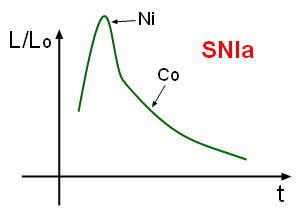 Having established the characteristics and evolution of different types of star, here we will dig a little deeper. Under what circumstances will a nebula collapse? What energy changes are happening during fusion beyond the main sequence? What happens to make a star die? And what does all of this have to do with gold ingots?
Having established the characteristics and evolution of different types of star, here we will dig a little deeper. Under what circumstances will a nebula collapse? What energy changes are happening during fusion beyond the main sequence? What happens to make a star die? And what does all of this have to do with gold ingots?
Key Concepts
Stars form when a giant molecular cloud collapses. Clouds collapse due to gravitational attraction but this is opposed by the random movement of the particles, so a cloud of given mass will only collapse if the temperature is low and the mass of the particles is high.
We can calculate whether a cloud will collapse based on whether its mass exceeds the Jeans criterion:
\(M_J={3\over 2}{kTR\over Gm}\)
- \(M_J\) is the Jeans criterion, above which an interstellar cloud may collapse (kg)
- \(k\) is the Boltzmann constant (1.38 × 10-23 JK-1)
- \(T\) is absolute temperature (K)
- \(R\) is the radius of the cloud (m)
- \(G\) is the universal gravitational constant (6.67 × 10−11 m3 kg−1 s−2)
- \(m\) is the average molecular mass (kg)
The Jeans criterion varies with temperature, radius and composition.
When a star has fused all available hydrogren, it ceases to be in its main sequence. However, fusion may yet continue depending on the temperature of the core after the collapse due to decreasing radiation pressure.
As the core gets hotter and more dense in the helium collapse, the helium nuclei may begin to fuse to beryllium. This requires a higher temperature than for hydrogren fusion, as more energy is required to overcome the electrostatic repulsion between the nuclei. When the rate of fusion decreases once more, the process of star contraction and increased temperature repeats.
In large stars with a core of \(M>4 M_\text{sun}\), cycles of nuclear fusion continue until iron is formed. This is because iron nuclei have the maximum binding energy per nucleon and so further fusion would require more kinetic energy than is released as binding energy. The temperatures required are not sustained.
How do we know all of this? Observations of stellar spectra show the existence of different elements in stars. Nuclear fusion theory explains these.


 Twitter
Twitter  Facebook
Facebook  LinkedIn
LinkedIn